ZINNIA
Zinnia
L., Syst. Nat. ed. 10. 2: 1189. 1221, 1377. 1759; Fl. China @ eFloras.org 20-21: 863; Smith, Fl. North Amer. @ eFloras.org 21: 71.
Annual or perennial herbs or subshrubs. Stems prostrate or erect. Leaves cauline, opposite or subopposite, sessile or shortly petiolate; leaf blade acerose (needle-shaped), elliptic, linear-lanceolate, lanceolate, linear, oblong or ovate, both surfaces hairy (often scabrous or scaberulous), usually gland-dotted, base rounded to cuneate sheathing stem, margin entire. Capitula solitary, terminal, usually radiate. Involucres campanulate, cylindric to hemispheric. Phyllaries persistent, 12-30+, 3- or 4-seriate, orbiculate to obovate or oblong, unequal, often coloured or dark banded distally, outer shorter. Receptacle conical, paleate, paleae often reddish to purplish distally, chartaceous to scarious, conduplicate, apices rounded to acute, sometimes fimbriate. Ray florets: Usually 5-21, more in double cultivars, rarely absent, female, fertile. Corolla variously coloured, ranging from white to yellow, orange, red, maroon and purple; limb persistent, sessile or nearly so, becoming papery, sometimes much reduced. Disc florets: 20-150+, bisexual, fertile. Corollas usually yellow to reddish, sometimes purple-tinged; tubes much shorter than cylindrical throats, lobes 5, ovate-lanceolate, usually unequal, usually villous or velutinous (covered with a fine and dense silky pubescence) adaxially. Cypselae 3-angled (of ray florets) and flattened, wingless (of disc florets). Pappi 0 or persistent, of 1- 3(-4) awns or tooth-like scales.
23 species
Zinnia elegans
Zinnia elegans
Jacq., Icon, Pl. Rar. 3: 15. 1792; Z. violacea Cavanilles, Icon i: 57, plate 81. 1791; Fl. North Amer. @ eFloras.org 21: 73.
Annuals, up to 1 m tall. Stems erect, greenish becoming yellowish to purplish, sparingly branched, hirsute. Leaves opposite, sessile; leaf blade 3-5-nerved, ovate to oblong, 6-10 cm x 2-6 cm, apex acute to acuminate, margin entire, base sheathing stem, abaxial surface scaberulous, adaxially glabrate. Capitula solitary terminal on peduncle, radiate, occasionally discoid, peduncle up to 6 cm long, densely pubescent. Involucres +/- hemispheric or broader, ca. 10 mm x 25 mm. Phyllaries persistent, 3- to 5-seriate, imbricate, 6-7 mm x ca. 5 mm, orbicular-oblong, unequal, apex rounded, pale green with lower half white abaxially, puberulent. Receptacle conical, paleate; paleae ca. 1.2-1.5 cm long, chartaceous to scarious, conduplicate, lower part hyaline, hairy, apical part reddish to purple, fimbriate. Ray florets: 8-21, more in double cultivars, female, usually red (white, yellow or purple in cultivars). Corolla tube very short, ca. 1 mm long, pubescent; limb ca. 13 mm x 8 mm, obovate or spathulate, apex emarginate, outer surface pubescent. Ovary 6-7 mm x 3-5 mm, triangular, hairy; style exserted, bifid, hairy. Disc florets: 100+, bisexual, ca. 12 mm long. Corolla usually yellow to reddish; tube ca. 7 mm long, glabrate; limb 5-lobed, lobes ca. 2.5 mm long, lanceolate, velutinous adaxially. Anthers ca. 3 mm long, apex appendiculate, appendages conical; filaments long, ca. 4.5 mm long, attached only at the base of corolla tube. Pistil +/- as in ray florets. Cypselae 6-10 mm, 3-angled (of ray florets) or +/- compressed (of disc florets), not or faintly ribbed, ciliolate. Pappus absent.
Common Names: Common Zinnia, Elegant Zinnia, Garden Zinnia
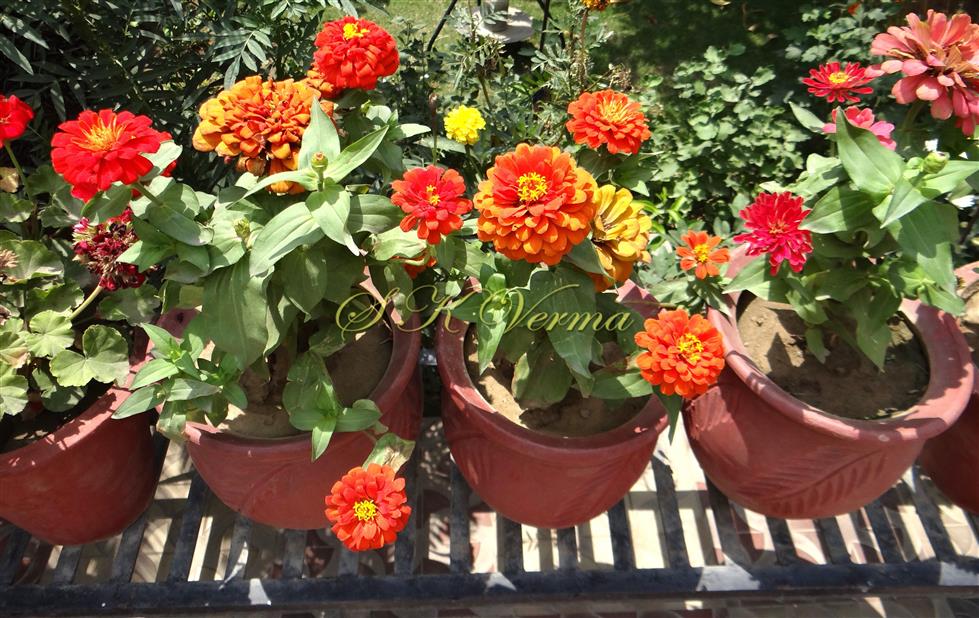
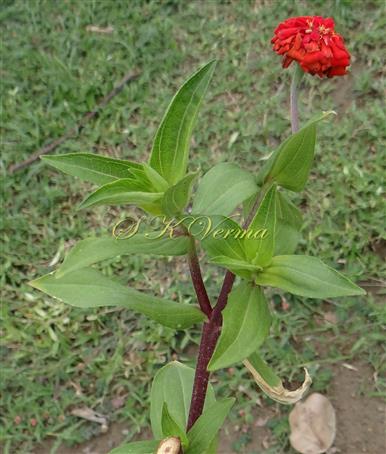
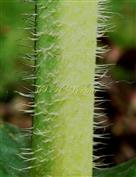
-DSC02094.jpg)
-DSC04961.jpg)
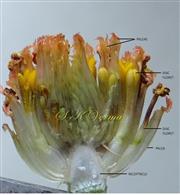
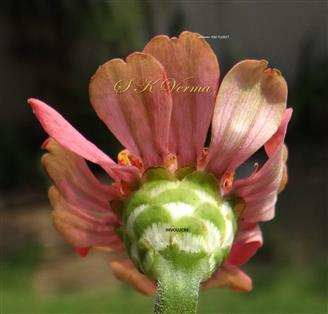
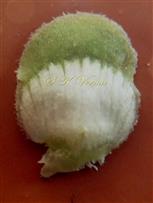


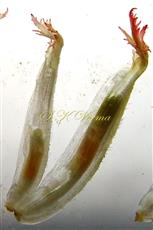

-DSC05036.jpg)




-DSC02094.jpg)
-DSC04961.jpg)




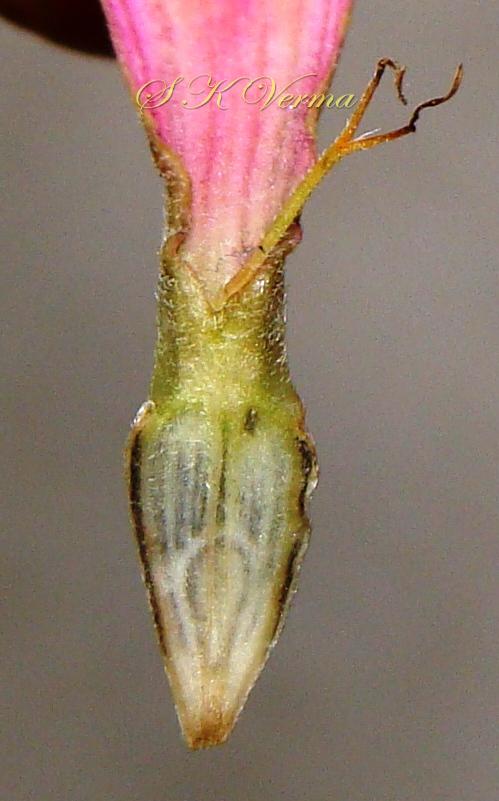

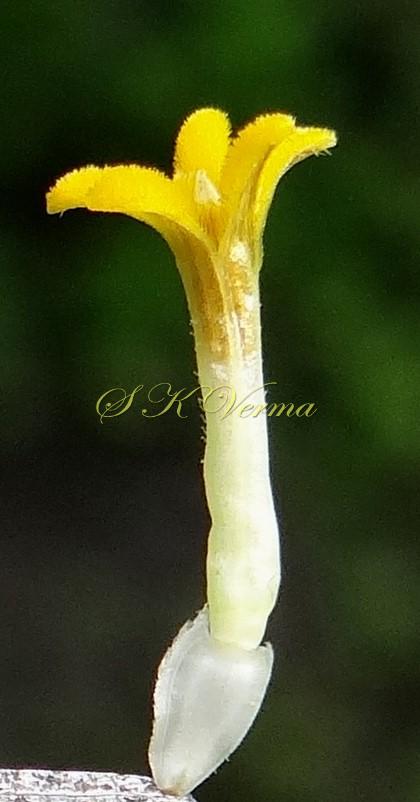
-DSC05036.jpg)